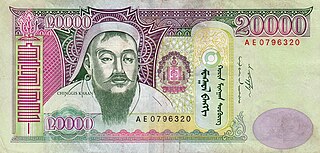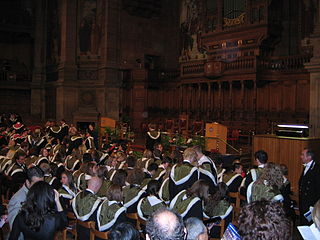Related Research Articles
A lozenge (◊), often referred to as a diamond, is a form of rhombus. The definition of lozenge is not strictly fixed, and it is sometimes used simply as a synonym for rhombus. Most often, though, lozenge refers to a thin rhombus—a rhombus with two acute and two obtuse angles, especially one with acute angles of 45°. The lozenge shape is often used in parquetry and as decoration on ceramics, silverware and textiles. It also features in heraldry and playing cards.

The Singapore dollar is the official currency of Singapore. It is divided into 100 cents. It is normally abbreviated with the dollar sign $, or S$ to distinguish it from other dollar-denominated currencies. The Monetary Authority of Singapore issues the banknotes and coins of the Singapore dollar.

The United States five-dollar bill ($5) is a denomination of United States currency. The current $5 bill features the 16th U.S. President (1861-65), Abraham Lincoln's portrait on the front and the Lincoln Memorial on the back. All $5 bills issued today are Federal Reserve Notes.

The United States fifty-dollar bill ($50) is a denomination of United States currency. The 18th U.S. President (1869-77), Ulysses S. Grant, is featured on the obverse, while the U.S. Capitol is featured on the reverse. All current-issue $50 bills are Federal Reserve Notes.

The United Arab Emirates dirham, also known as simply the Emirati dirham, is the currency of the United Arab Emirates. The term dirham is officially abbreviated "AED", while unofficial abbreviations include "DH" or "Dhs.". The dirham is subdivided into 100 fils (فلس).

The dollar is the currency of Trinidad and Tobago. It is normally abbreviated with the dollar sign $, or alternatively TT$ to distinguish it from other dollar-denominated currencies. It is subdivided into 100 cents. Cents are abbreviated with the cent sign ¢, or TT¢ to distinguish from other currencies that use cents. Its predecessor currencies are the Trinidadian dollar and the Tobagonian dollar.

The tögrög or tugrik is the official currency of Mongolia. It was historically subdivided into 100 möngö (мөнгө). Currently, the lowest denomination in regular use is the 10-tögrög note and the highest is the 20,000-tögrög note. In unicode, the currency sign is U+20AE₮TUGRIK SIGN.

The Canadian $50 note is one of the most common banknotes of the Canadian dollar. It is sometimes dispensed by ATMs, but not as commonly as the $20 note.

The lozenge in heraldry is a diamond-shaped charge, usually somewhat narrower than it is tall. It is to be distinguished in modern heraldry from the fusil, which is like the lozenge but narrower, though the distinction has not always been as fine and is not always observed even today. A mascle is a voided lozenge—that is, a lozenge with a lozenge-shaped hole in the middle—and the rarer rustre is a lozenge containing a circular hole in the centre. A field covered in a pattern of lozenges is described as lozengy; similar fields of mascles are masculy, and fusils, fusily. In civic heraldry, a lozenge sable is often used in coal-mining communities to represent a lump of coal.
In 1999 a private organisation, the Chatham Islands Note Corporation, issued banknotes to celebrate the Chatham Islands being the first human-inhabited land to enter the third millennium. Banknotes such as these cannot be declared legal tender, and there is no obligation for anyone to accept the notes issued by the Chatham Island Note Corporation in any transaction. These notes were reported to have been accepted by merchants on the Chatham Islands, some of whom served as directors of the issuer.

The Hyderabadi Rupee was the currency of the Hyderabad State from 1918 to 1959. It coexisted with the Indian rupee from 1950. Like the Indian rupee, it was divided into 16 annas, each of 12 pai. Coins were issued in copper for denominations of 1 and 2 pai and ½ anna, in cupro-nickel for 1 anna and in silver for 2, 4 and 8 annas and 1 rupee.
The banknotes of the Sungei Buloh Settlement were issued as leprosy colony money in 1935 and 1936, at Sungei Buloh, when it was a leper colony. The currency was based on the Straits Settlements dollar. These notes are extremely scarce. They were all printed by the Survey Department, Federated Malay States. They have never been listed in the Standard Catalog of World Paper Money.
Banknotes were issued by the Commercial Bank of Newfoundland at various times between 1857 and 1888. The notes are quite rare.
Banknotes were issued in 1943 by the British Army for circulation in Tripolitania. The main feature of the notes is depiction of a lion standing on the King's Crown. The notes are inscribed in both Arabic and English.
Banknotes of the Venezuelan venezolano circulated between 1872 and 1879.
The flag and the coat of arms of Johor are state symbols of Johor, Malaysia. Like other states of Malaysia with Malay royalties, the state symbols of Johor are influenced by Johor's royalties, as well as Islam and the political and natural features of the state.

The flag and the coat of arms of Kelantan are state symbols of Kelantan, Malaysia. Like the flag of Kedah, the Kelantanese flag is red with a single charge from Kelantan's coat of arms, albeit partially.

Academic dress at the University of Edinburgh is compulsory at official ceremonial occasions, such as graduation and the installations of Rector and Chancellor, and otherwise optional, usually only worn for events.

There are officially two flags of Bavaria: the striped type, and the lozenge type, both of which are white and blue. Both flags are historically associated with the royal Bavarian Wittelsbach family, which ruled Bavaria from 1180 to 1918.

The coat of arms of the Chechen Republic is the official symbol of the Chechen Republic. Approved by acting President of Chechnya Sergey Abramov on 22 June 2004.
References
- Standard Catalogue of Malaysia Singapore Brunei Coin & Paper Money 16th Edition, edited by Steven Tan. Published by International Stamp & Coin Sdn. Bhd., Kuala Lumpur, Malaysia.
| This Banknote-related article is a stub. You can help Wikipedia by expanding it. |